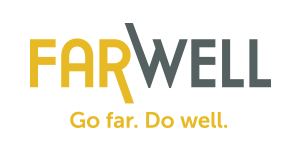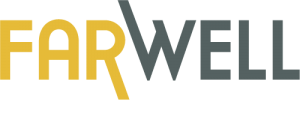Discover advisor articles and other FarWell resources.
Go far. Do well. Call (800) 987-2015
Return on Investment | Process Optimization

Change Management | 5 Essentials of Change Leadership
November 7, 2018
Discovering the ‘Who’ of Your Organization | Organizational Culture
January 2, 2019“Companies that do not leverage information technology as a key part of their business strategy may ultimately cease to exist.”
– IBM: Calculating ROI for Process Improvement, 2009
Managing ROI Across 3 Process Optimization Project Scenarios: Software Implementation, Process Automation, and Manufacturing Equipment Upgrade
Few organizations take the time to determine an initiative’s ROI before project kick-off, and it costs them. Consider these return on investment costs and benefits before kickoff.
As process optimization experts, we come across many projects that are intended to reduce costs and maximize efficiencies. Many organizations launch process optimization initiatives like software implementation, process automation and manufacturing equipment upgrades in hopes that they will resolve inefficiencies; however, few organizations take the time to determine the initiative’s ROI before project kick-off.
In the flurry of immediate needs that the initiative is generating, it is easy to push a project through without thoroughly analyzing how it will perform financially.
This can result in a project that misses the mark on the expected benefits, or even concludes with a process that is costlier than what was originally in place.
How to Maximize ROI in the Project Management Process
To maximize ROI, we recommend analyzing the financial performance of your project before committing to it. To do this, we outline three different project scenarios and highlight what costs and benefits managers should be analyzing.

Project Scenario 1:
Unexpected Maintenance Costs During a New Software Implementation
In our digital economy, companies are installing new software more often than ever before. Today’s software can solve many problems of the past, especially with modern capabilities to integrate applications together to work in real-time.
Don’t forget, though, that while these implementations can greatly help reduce labor and errors, particularly if your company has manual data entry or transfer, the software of today also has regular upgrade and maintenance cycles.
Process Optimization – New Software Implementation
When evaluating new software implementation projects, be sure these maintenance costs are captured whether you already have the expertise on your team to cover it or you need to hire new expertise. In addition to this type of cost, always consider the following:

Incurred Software Implementation Costs
- Software Licensing
- Hardware Upgrades
- Software Implementation Labor
- Software Maintenance Labor/Fees

Reduced Software Implementation Costs
- Labor efficiency
- Labor reduction
- Lower manual data transfer
- Higher data integrity = Improved quality
Project Scenario 2:
Never-ending Process Automation Project
When implementing a process optimization or process automation project, your biggest battle may be scope creep. Projects often start with reasonable goals and timeliness only to expand into unmanageable monsters that take years to finish or are never completed.
Process Optimization – Process Automation
Be sure to break large projects into manageable, prioritized phases with obtainable timelines. Consider that the business may interrupt the project at any time for a higher priority. Generally, the costs and benefits to be aware of when evaluating these types of projects are:
Incurred Process Automation Costs
- Implementation labor
- Software fees
- Equipment fees

Reduced Process Automation Costs
- Labor efficiency
- Lower manual data transfer
- Higher data integrity = Improved quality
Project Scenario 3:
Manufacturing Equipment Upgrade or Replacement – Equipment Production Downtime
Making changes or upgrades to a manufacturing process can be a big and costly undertaking. Minimizing the interruption to production is critical. Always factor this downtime into your project evaluation.
Process Optimization – Production Downtime
To help estimate this cost and perhaps reduce it, including the line laborers who use the equipment in all aspects of the project may provide useful insights. Doing this will also help with their buy-in for the change that such a capital upgrade will entail. Other costs and benefits to be aware of on this type of project are:
Incurred Process Automation Costs
- Implementation Labor
- Expertise Labor
- Manufacturing downtime
- Equipment costs

Reduced Process Automation Costs
- Labor efficiency/reduction
- Higher throughput
- Improved quality
- Depreciation tax shield
Process Optimization and Improvement Leadership Takeaway
Evaluate a project’s ROI and match the effort’s intentions with its actual outcome.
While this overview is by no means a comprehensive stock of all the cost drivers that should be included when calculating the present value of each of these types of projects, it should guide managers in the project evaluation phase.
For more information on leading a successful process automation and optimization project, call FarWell at (800) 987-2015.
The FarWell team also specializes in culture and leadership transformation, portfolio, program and project management, and change strategy and implementation with organizations looking to thrive in their ever-changing industries.
Watch our Change Navigator Video or email us to schedule a free Right-Fit discovery meeting.






